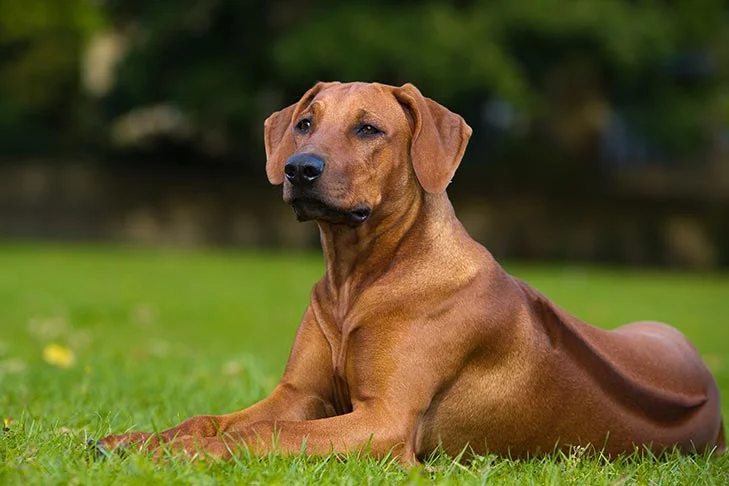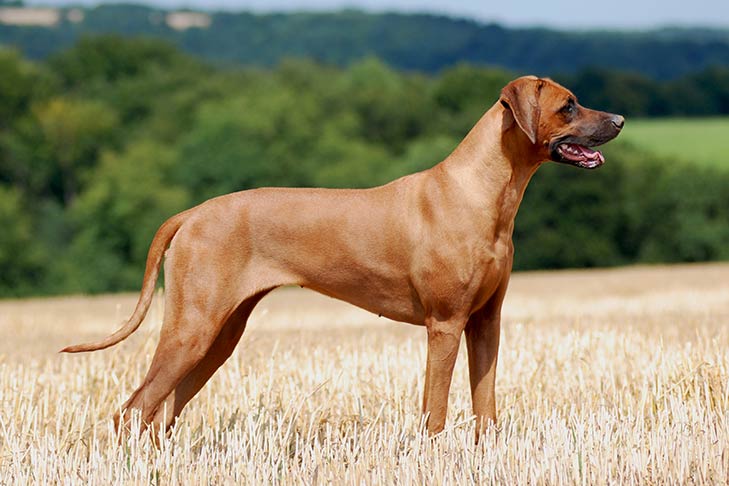A versatile “Renaissance hound,” the Rhodesian Ridgeback is distinguished by a ridge, or stripe, of hair that grows backward, on his back. Ridgebacks are beloved family dogs whose owners must be prepared to deal with their independence and strong hunting drive, despite the fact that the breed was once famous in its native Africa for its talent at tracking and baying, but never, ever killing, lions.
Ridgebacks are swift, powerful athletes who can weigh anything from 70 to 85 pounds, and frequently more, beneath their distinctive ridge. They only come in one color, wheaten, which ranges from light flaxen to the burnished crimson of a maturing crop in a wheat field. Additionally, ridgebacks have two different nose colors: the less common brown and the black. Strong-willed, independent, and occasionally dictatorial traits may be seen in the fearsome Ridgeback. Ridgebacks need to be raised with a fair but firm hand from a young age. They have loyal friendships, are devoted to the people they love, and have a melting passion for those they can rely on. A Ridgeback, however, may be too much of a hound for a new dog owner.







 Health
Health Grooming
Grooming Exercise
Exercise Training
Training Nutrition
Nutrition